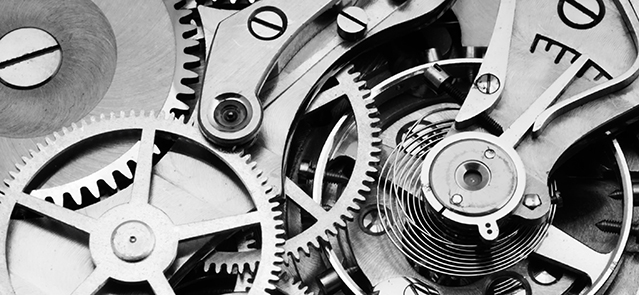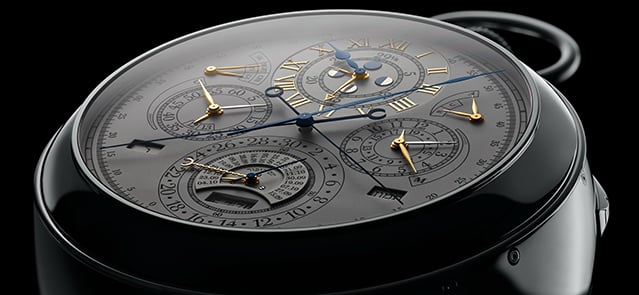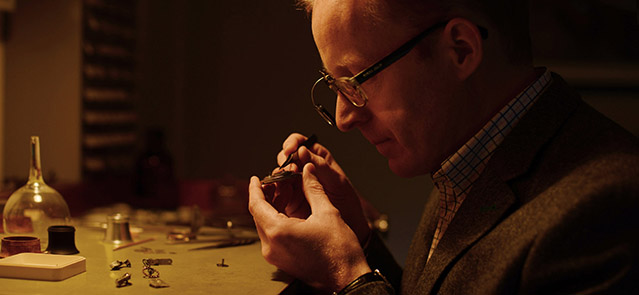What’s inside a luxury timepiece?
July 11, 2016
What’s the complicated part of making a watch, how much of the analogue craft has given way to technology and where does the UK figure in the marketplace? Timepiece aficionado Ariel Adams shares his wisdom

Photo: Alamy
‘What people don’t understand about watches, compared to other wearable luxury items, is that they are small machines,’ says American watch guru Ariel Adams.
While a pair of shoes, for example, has around a dozen individual elements, Adams points out that a watch can have hundreds. ‘And each of those individual parts has to have extremely small tolerances, and needs to be produced using sophisticated machinery and techniques.’
However, as technology ushers in a new generation of watches that use silicon parts rather than metal and can even replace our smartphones, is the craft that goes into creating luxury timepieces a remnant of a bygone era?
Timepiece premium
Adams certainly doesn’t think the craft of watchmaking is a thing of the past. He points to Vacheron Constantin’s Reference 57260 pocket watch as a modern classic. Launched in 2015, it took a team of three master watchmakers eight years to build and is hailed as the most complicated timepiece ever made.
With 57 functions, known as complications, Vacheron Constantin’s pocket watch houses more than 2,800 tiny mechanical components. While most luxury watches will not have quite this many elements, they will still be the result of years of research and development.
Vacheron Constantin’s Reference 57260 pocket watch is a modern classic
‘It took hundreds of years for humankind to get to the point where we could mass-produce a mechanical timepiece,’ says Adams. ‘There’s an enormous amount of trial, error, skill and talent required in making a watch.’
Complications play a part in how much a luxury watch will set you back, and so too does rarity – how many editions of a timepiece did the manufacturer produce, how many are still in circulation, where are they now?
And, of course, there’s branding – how cool or sophisticated will buying one timepiece over another make us feel? ‘There’s very little about how a watch is made that is actually proprietary,’ observes Adams. ‘There are some proprietary designs maybe… but it’s not like Rolex has some special kind of steel.’
The lifestyle transition
As the owner of a watch collection that runs into the hundreds, Adams understands the allure of niche brands, particularly for the male consumer. ‘Men have precious few things that talk about who they are, especially if they are interested in expressing their lifestyle in a secondary way.’
Previously, most people wore a watch because they needed to – as one of the few wearable options for timekeeping, the watch was an essential tool in their day. Then we transitioned to a point where people wanted a watch for what it said about them – about their lifestyle, taste and status.
The first timepieces date back to the 16th century, and the actual process of making a watch remained relatively unchanged for centuries until the ‘quartz revolution’ of the 1970s. Using this new material meant that watches could be manufactured much more cheaply than traditional, mechanical watches.
While quartz watches were more reliable than their mechanical predecessors, Adams is quick to defend these classic pieces of design. ‘Imagine if someone collects ceramics, for example. Theoretically, a ceramic coffee mug and a Picasso ceramic are kind of in the same category, but they’re also not,’ says Adams.
‘One item is produced by someone who is talented and is meant to evoke emotion, as well as perhaps being functional. The other is a mass-produced item that might not use the best quality materials. One arguably has a degree of character to it, it’s imbued with personality, whereas the other is arguably soulless.’
Watch this space
A new revolution is taking place in the horology industry as silicon replaces metal in watch movements. This latest material – in use since the early years of this century – does not wear or need lubrication, it is not magnetic and is not affected by temperature.
Adams believes that the watch industry will continue to evolve as machining technology improves. Interestingly, the watch industry today uses technology and machinery often invented for other industries, such as medical instruments and computers. It’s no coincidence then that there are a lot of medical device companies in Switzerland as well as many watch brands.
And what does Adams think about the new generation of timepieces that can tell you your heart rate while playing your favourite music? ‘Smartwatches? I’m ecstatic about them,’ he says. ‘I’m a great believer in what they may be. Right now it’s a very new technology and, as with many other emerging technologies, people are asking themselves “What do I do with this? Does this make sense? Should I buy this now? How will this help my life?”’
Greenwich meantime
For its part, the UK is home to several watch brands that Adams thinks are worth investigating. He namechecks Roger W Smith, ‘who makes everything by hand’ and Bremont ‘who are trying to get a little more mainstream – they do really great watches’.
British watchmaker Roger W Smith makes everything by hand
Adams also praises e-commerce pioneer Christopher Ward, who has always sold his watches directly to the consumer. ‘Historically the UK was the epicentre of horology,’ he notes. ‘In the late-17th and 18th century all the best watches came out of England. The traditional watch industry is alive and well again there – from a watch industry perspective, the UK is very important.’
Ariel Adams founded the online watch magazine aBlogtoWatch in 2007, is a published author and an internationally referenced expert on timepieces.
We offer tailored watch cover as part of Hiscox home contents insurance cover. To find out more about how to get high-value watch insurance check out our Jewellery cover page.








 Very satisfied with the service from Hiscox as always
Very satisfied with the service from Hiscox as always

